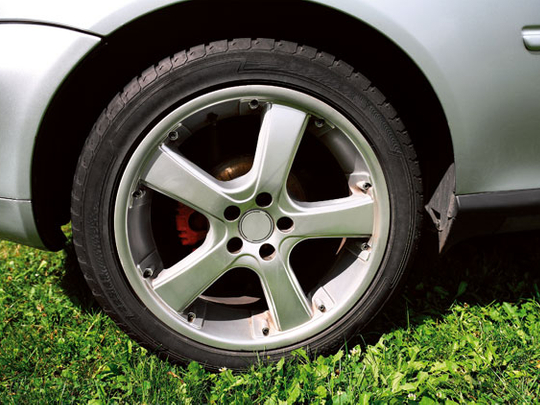
There’s an old saying, “fast, cheap or good, you can pick any two”, and it neatly sums up the dilemma facing modern tyre manufacturers. Consumers want lower fuel consumption and lower emissions, but greater longevity and economy without sacrificing driving feel and performance. It seems like an impossible task.
And yet, all of the major manufacturers seem to have achieved the impossible. Michelin claims its Energy Saver tyre will not only save you 80 litres of fuel and last 10,000km longer, but will still stop you three metres sooner on wet roads than a previous generation tyre. So how is that possible? Time to get technical.
It’s all down to the trade-off between the grip and feel of sticky, soft-compound tyres and the low rolling resistance and longevity of hard compound tyres. Harder compounds wear better, roll longer, give a harder ride and grip less. But they last forever.
Soft compounds grip well, ride more comfortably, wear out faster and punish you at the pumps. How to reconcile the two? Well, Michelin was amongst the first to try with the launch of the first-generation low-fuel-consumption ‘green tyres’ made possible by the partial substitution of carbon black with silica in the compound.
Since then, the proportion of silica in the compound has steadily increased with advances in technology, and today Michelin uses an almost 100 per cent silica-based rubber compound.
Silica helps keep the tyre cool, reducing both the energy consumption and wear rates caused by heating due to distortion of the tyre. It reckons the compound in Michelin Energy Saver tyres will save you 80 litres of fuel compared with some European competitors’ tyres, based on research carried out by TÜV SÜD in 2009 on the 15 key tyre sizes for the European market. Michelin tyres are distributed through TyrePlus outlets across the UAE.
Japanese tyre company Yokohama is equally proud of its technology, and claims the dB Super E-spec offers extremely quiet and efficient motoring.
These tyres incorporate orange oil, natural rubber and other naturally derived components in the Super Nano-power Rubber Compound to significantly reduce
the need for petroleum materials to create an environmentally friendly, fuel-efficient tyre that doesn’t compromise on performance.
Careful tread design ensures the tyre stays cool and offers lower rolling resistance when travelling straight, yet gives rapid response and good grip when cornering.
Rajesh Puthonveedu, product manager at the tyres and batteries department of Juma Al Majid Est, distributors of Yokohama in the UAE, says there are more exciting developments on the horizon. Yokohama has created a tyre range called BluEarth that incorporates all its latest technologies, and these will be rolled out progressively over the next year. Expect them in the UAE in the first half of 2012.
If you fancy a German-engineered solution to your eco concerns, Continental offers the ContiEcoContact 5 tyre. This has the same three-way balance between rolling resistance, grip and longevity, but with a different focus on tread design.
Developed in close cooperation with Europe’s leading car manufacturers, the new tyre arose from a completely new approach to all four components of the tyre: design, contour, compound and tread pattern.
The result was reduced CO2 emissions and lower fuel consumption, while still delivering excellent braking performance. A combination of special additives and optimised tread lug edges give improved grip.
Functionalised polymer chains firmly linked to the silica mean lower rolling resistance. Extra-thin sipes reduce tread deformation, thereby also minimising energy loss, and a weight-reduced sidewall provides greater suppleness, also contributing towards improved rolling resistance. Continental Tyres are distributed exclusively by Emirates for Universal Tyres LLC in Dubai and Abu Dhabi.
The fact is that globally, tyre technology and performance have advanced enormously in recent years, driven by consumer concerns about CO2 emissions and environmental impacts. Exotic new components in the compound achieve that seemingly impossible mix between low rolling resistance and high lateral grip. Clever tread design helps keep tyres cool and stable to improve longevity and reduce fuel consumption. And all of this is done without sacrificing cornering feel and short braking distances. Perhaps, at last, it really is possible to fit a set of tyres that improves the performance of your car both on the road and at the pumps, and reduces its impact on the planet. Enjoy your driving with a cleaner, greener conscience.











